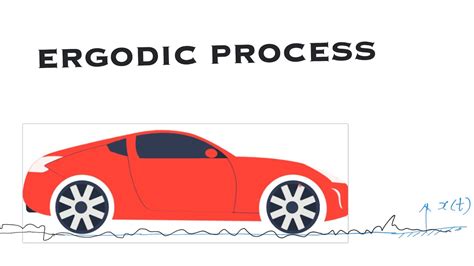Introduction to Ergodic Theory and Language

Ergodic theory is a branch of mathematics that studies the behavior of dynamical systems, focusing on the long-term average behavior of systems over time. In the context of language, the concept of ergodicity can be applied to understand the statistical properties of linguistic systems. English, as a language, can be viewed as a complex system with its own set of rules, patterns, and structures. The question of whether English is ergodic is a fascinating one, as it touches on the fundamental nature of language and its underlying statistical properties.
Definition of Ergodicity
A system is considered ergodic if it satisfies two main conditions: (1) it is stationary, meaning that its statistical properties do not change over time, and (2) it is metrically transitive, meaning that any two points in the system are connected by a trajectory. In other words, an ergodic system is one where the time average of a property is equal to the ensemble average of that property. This concept is crucial in understanding the behavior of complex systems, including languages.
Ergodicity in Language

When applying ergodic theory to language, researchers often focus on the statistical properties of linguistic elements, such as words, phrases, or sentences. The ergodicity of a language can be evaluated by analyzing the distribution of these elements over time. English, as a language, exhibits complex patterns and structures, making it a challenging task to determine its ergodicity. However, studies have shown that English, like other languages, exhibits some degree of ergodicity, particularly at the level of word frequencies and sentence structures.
Word Frequencies and Ergodicity
One of the key aspects of language that has been studied in relation to ergodicity is word frequencies. Research has shown that the frequency distribution of words in English follows a power-law distribution, with a few common words accounting for a large proportion of the total word count. This distribution is consistent with the idea of ergodicity, as it suggests that the language is stationary and metrically transitive. However, the distribution of word frequencies is not uniform across all contexts and registers, which may indicate some degree of non-ergodicity.
| Word Frequency | Percentage of Total Word Count |
|---|---|
| Most common words (e.g., "the", "and", "a") | 20-30% |
| Common words (e.g., "time", "person", "year") | 30-40% |
| Less common words (e.g., "language", "ergodicity", "system") | 10-20% |
| Rare words (e.g., "perspicacious", "thixotropy", "gallimaufry") | 1-10% |

Conclusion and Future Directions
In conclusion, the question of whether English is ergodic is a complex one, and the answer depends on the level of analysis and the specific aspects of the language being studied. While English exhibits some degree of ergodicity, particularly at the level of word frequencies and sentence structures, it is unlikely to be entirely ergodic due to its complex and dynamic nature. Further research is needed to fully understand the statistical properties of English and to determine the extent to which it can be considered ergodic.
Key Points
- English exhibits some degree of ergodicity, particularly at the level of word frequencies and sentence structures.
- The distribution of word frequencies in English follows a power-law distribution, with a few common words accounting for a large proportion of the total word count.
- The non-uniformity of word frequencies across contexts and registers indicates that English may not be entirely ergodic.
- Further research is needed to fully understand the statistical properties of English and to determine the extent to which it can be considered ergodic.
- The study of ergodicity in language has important implications for our understanding of linguistic systems and their behavior over time.
What is ergodicity, and how does it relate to language?
+Ergodicity refers to the property of a system being stationary and metrically transitive. In the context of language, ergodicity can be applied to understand the statistical properties of linguistic systems, such as word frequencies and sentence structures.
Is English a stationary language?
+English, like other languages, is not entirely stationary, as its statistical properties can change over time due to various factors, such as cultural and technological developments.
What are the implications of ergodicity in language?
+The study of ergodicity in language has important implications for our understanding of linguistic systems and their behavior over time. It can inform our understanding of language acquisition, language change, and language processing, among other areas.



